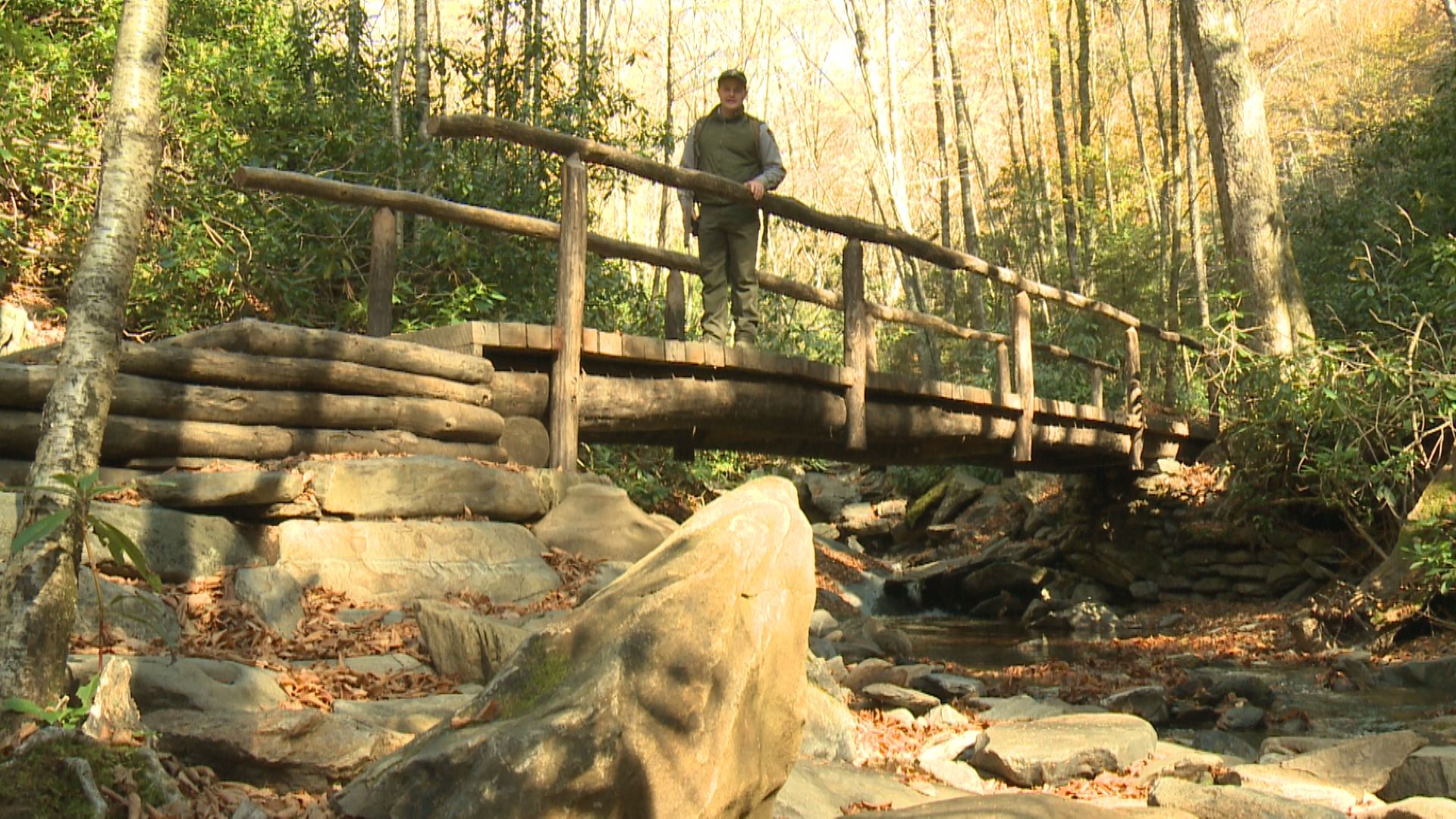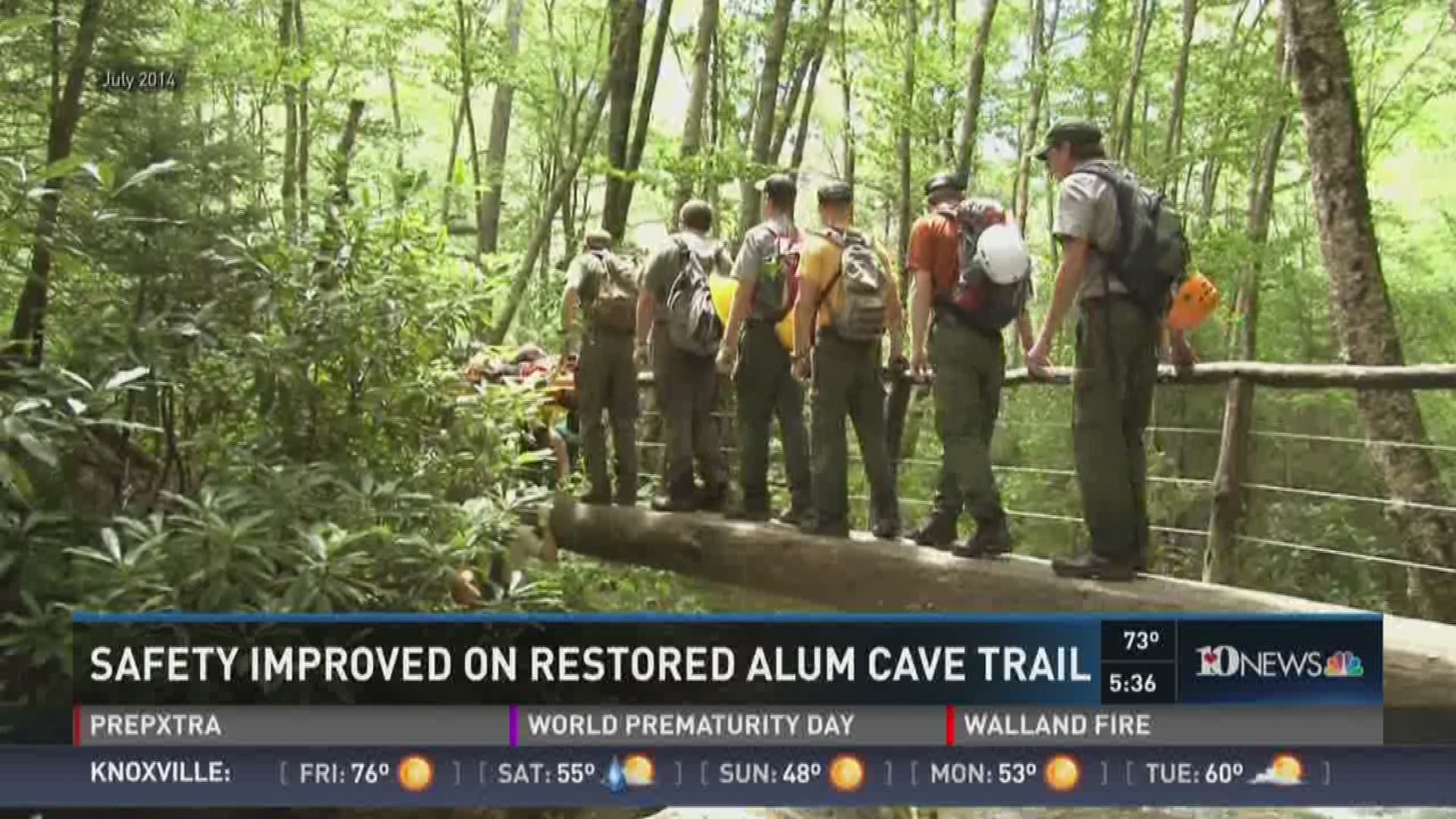Two years of difficult construction on one of the most popular trails in the Great Smoky Mountains officially concluded Thursday with the help of some very large scissors.
The National Park Service cut the ribbon on the fully restored Alum Cave Trail. For the last couple of years, the park closed the trail to hikers during the week while the five-mile path to the top of Mount LeConte was revitalized.
"It means a lot. The work they've done on this trail is phenomenal," said Tim Line, general manager of the LeConte Lodge located at the summit of Mount LeConte. "We were really concerned about how this project would affect our visitors and our business because 80 percent of people who climb to the top of the mountain use Alum Cave Trail. We made up for the weekday closures by staying very busy on weekends. In the end, it was worth the sacrifice to have this trail in great shape for a very long time. They did such a great job, unless you had been here a lot in the past, you would not know where they did the work."

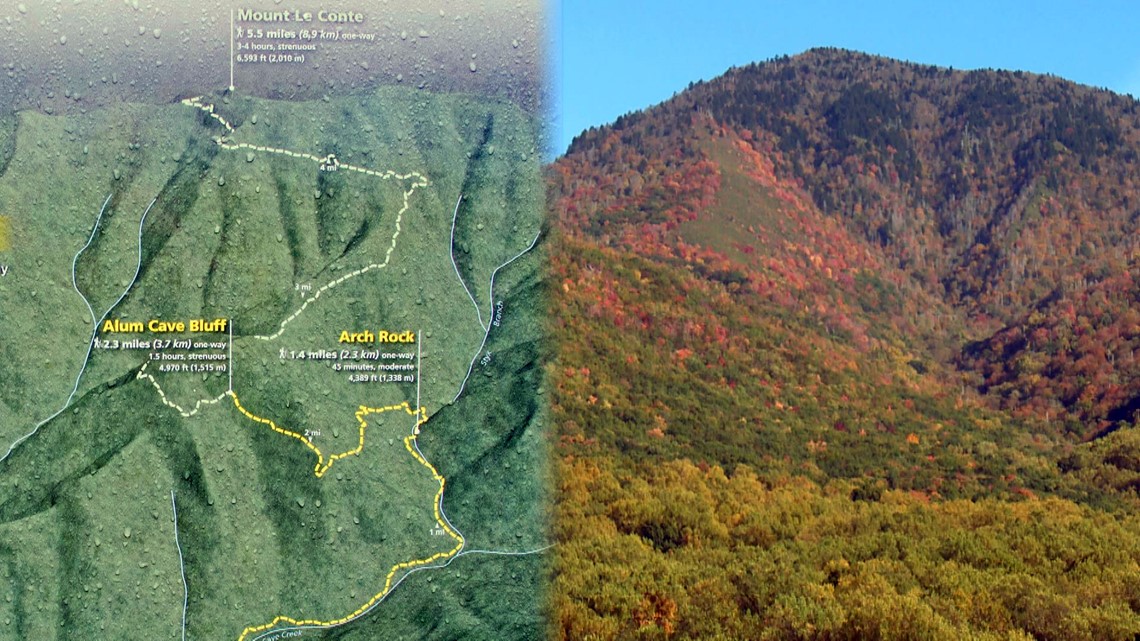
The five-mile climb up Alum Cave Trail to Mount LeConte rewards hikers with some of the most spectacular scenery in the Smokies. That reward comes with risk.
A major aspect of the restoration work involved smoothing and widening portions of the trail.
"This being one of the most popular trails in the park, there had been a lot of erosion. That creates a lot of roots and rocks that people can trip over," said Line. "We hope the improvements will reduce injuries."
Before the restoration, the heavily-worn trail forced hikers to spend more time looking down than looking up at the scenery.
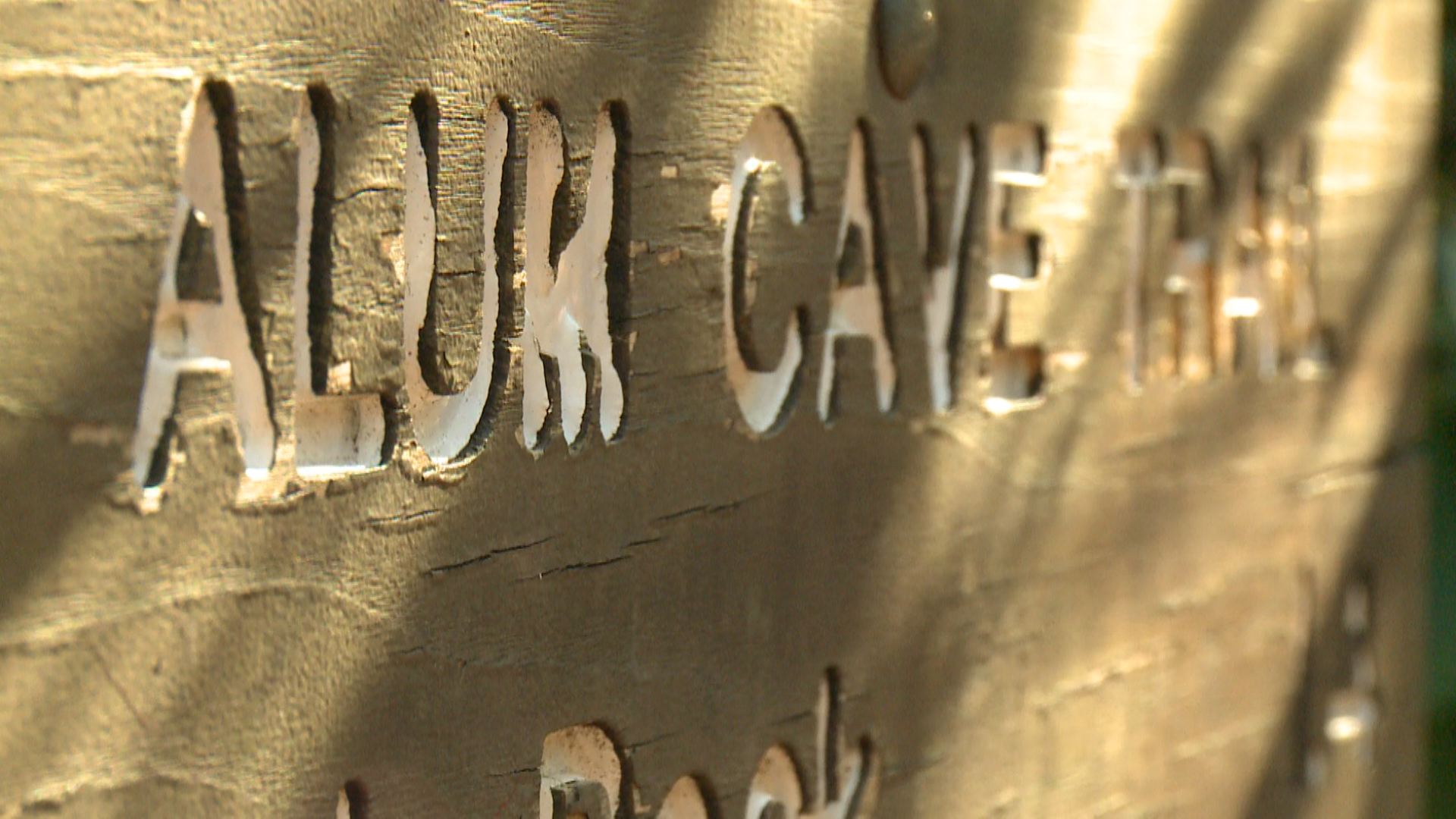
"It's really hard to experience the majesty of the Smokies when you're so carefully focused on every footfall in front with every step," said GSMNP deputy superintendent Clay Jordan. "If you ever took your eye off your footing, you could sprain or break an ankle. Then your wonderful Smokies hiking experience would be suddenly transformed to being carried out in a basket by 10 rescue workers."
The two-year restoration project not only makes the path more pleasant. It is safer.
"There are just fewer trip hazards. A whole lot fewer people are going to be getting injured now," said Jordan.
The restoration project also made steps less steep and freshened up old life-lines along the cliffs.
"We replaced the hand cables. There are lots of sections on this trail that are very rocky and during the winter these sections get very icy. If we didn't have these [hand cables] on here, it would be very tricky to navigate," said Josh Shapiro, the project manager for the restoration of Alum Cave Trail.
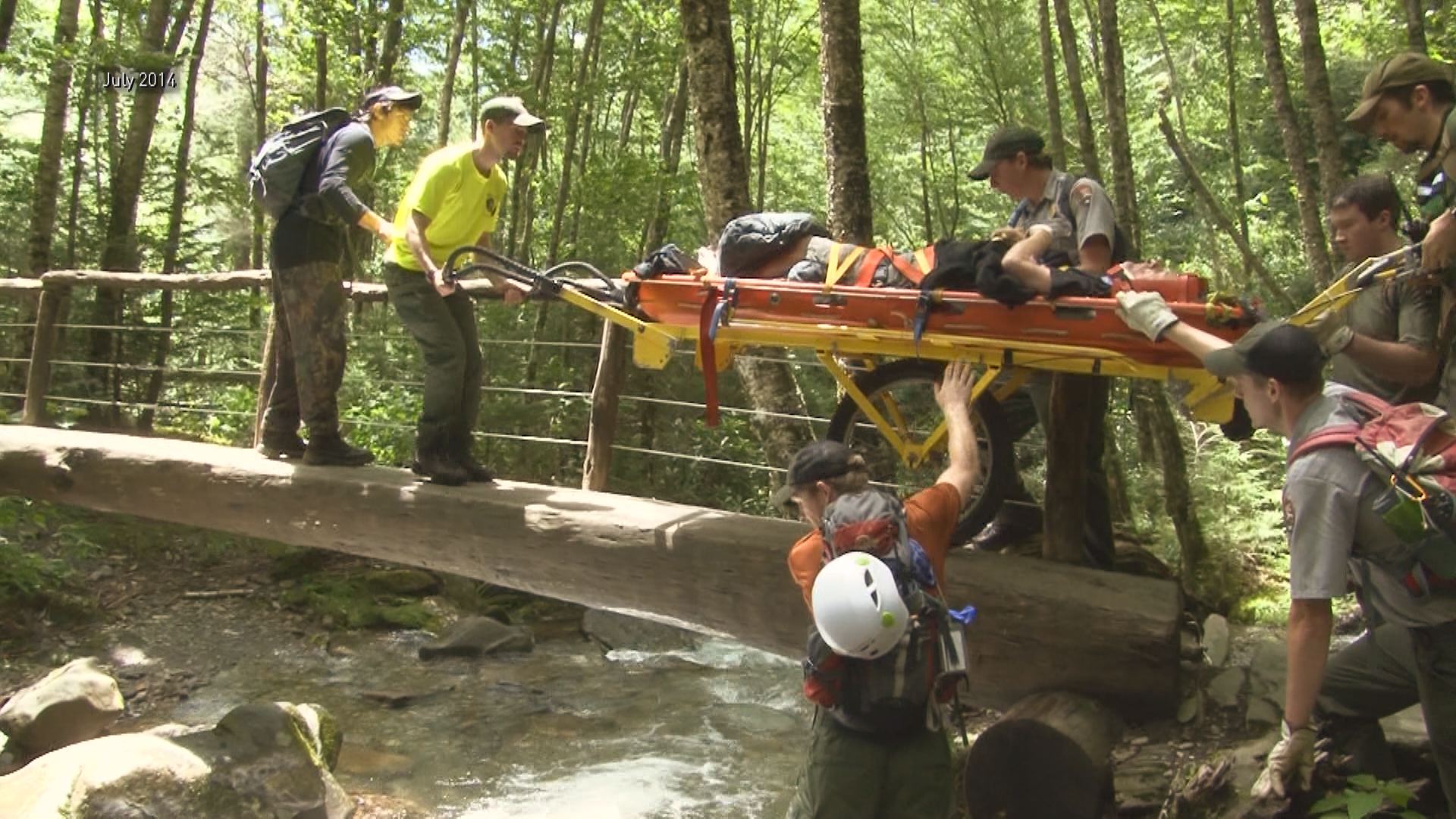
Crews also replaced a skinny foot log bridge with a much wider and safer bridge constructed of black locust wood. The improved bridge should assist rescue crews in times when someone inevitably needs help on the trail.
"On the old bridge, when the stream rises up, it was very difficult and dangerous for the rangers as well as whoever was being rescued to get across. We wanted to make a bridge that would be easier to get a rescue litter across," said Shapiro.
All of the work makes for a hike with fewer hazards and an easier road for rescue crews. The NPS hopes the reduced risks will allow hikers to spend more time reaping the rewards of the Great Smoky Mountains.
"You can't beat the views, they're just unparalleled. All of the trails going up the mountain are great, but I think Alum Cave is just a little more special," said Line.
